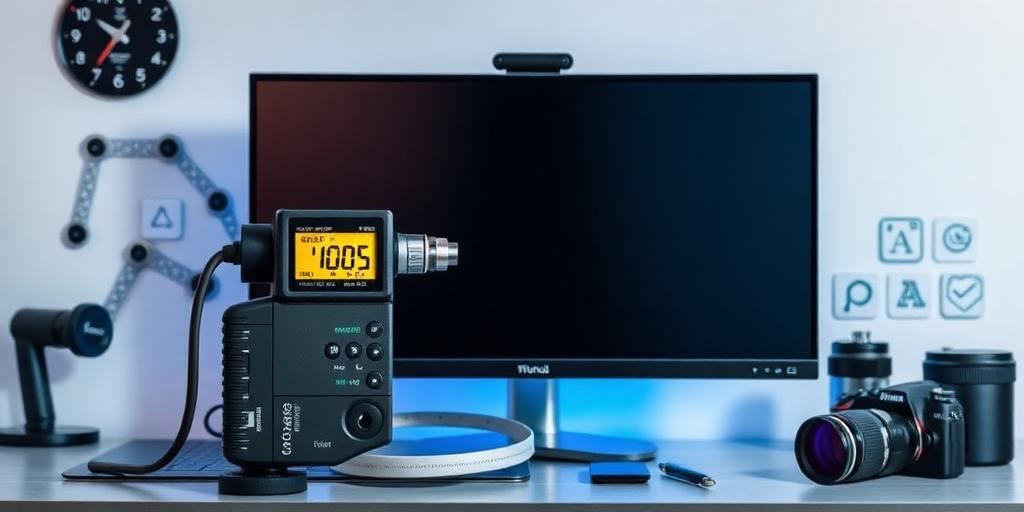Calibrating Your Monitor: Why It's Crucial for Creatives
For creatives, accuracy is paramount. Whether you're a photographer, graphic designer, video editor, or digital artist, the precision of your work hinges on the tools you use. One of the most critical, yet often overlooked, tools is your monitor. Calibrating your monitor ensures that the colors you see on screen are accurate and consistent, leading to better results and a more professional workflow.
What is Monitor Calibration?
Monitor calibration is the process of adjusting your monitor's settings to achieve a specific color standard. This involves using specialized hardware and software to measure the colors displayed on your screen and then creating a profile that corrects any inaccuracies. Think of it as fine-tuning an instrument to play the right notes.
Why is Calibration Important for Creatives?
- Accurate Color Representation: A calibrated monitor displays colors accurately, ensuring that what you see on screen closely matches the final output, whether it's a print, a website, or a video.
- Consistency Across Devices: Different monitors display colors differently. Calibration helps to standardize the color output, providing a consistent viewing experience across multiple devices.
- Better Decision-Making: Accurate colors enable you to make better decisions during the creative process. You can confidently adjust hues, saturation, and brightness, knowing that the changes you make are true to life.
- Professional Results: Clients and collaborators expect professional-quality work. Using a calibrated monitor demonstrates your commitment to accuracy and attention to detail, enhancing your reputation.
- Time and Cost Savings: By ensuring accurate colors from the start, you reduce the need for costly reprints or revisions. This saves you time and money in the long run.
How to Calibrate Your Monitor
There are two primary methods for calibrating your monitor:
Hardware Calibration: This method involves using a hardware device called a colorimeter or spectrophotometer. These devices attach to your screen and measure the colors displayed. The accompanying software then generates a custom profile that corrects any inaccuracies.
- Benefits: More accurate, precise, and reliable results.
- Drawbacks: Requires an initial investment in hardware.
Software Calibration: This method relies on software tools that guide you through a visual calibration process. You adjust your monitor's settings based on the software's recommendations. While not as accurate as hardware calibration, it can still provide noticeable improvements.
- Benefits: Cost-effective, as it doesn't require additional hardware.
- Drawbacks: Less accurate, relies on subjective visual assessment.
Steps for Hardware Calibration
- Install the Software: Install the software that comes with your colorimeter or spectrophotometer.
- Connect the Device: Connect the device to your computer and place it on your screen as instructed.
- Follow the Prompts: Follow the software's prompts to measure the colors displayed on your screen. The software will guide you through the process, making adjustments as needed.
- Create and Save the Profile: Once the measurements are complete, the software will create a custom color profile. Save this profile and set it as the default for your monitor.
Steps for Software Calibration
- Choose a Calibration Tool: Select a software calibration tool. Some operating systems have built-in calibration utilities, while others require downloading third-party software.
- Adjust Brightness and Contrast: Follow the software's instructions to adjust your monitor's brightness and contrast settings.
- Set the White Point: Set the white point to achieve a neutral white balance. This ensures that white appears white, rather than tinted blue or yellow.
- Adjust Gamma: Adjust the gamma setting to achieve the correct tonal range. This affects the overall brightness and contrast of the image.
- Save the Settings: Save the calibration settings and set them as the default for your monitor.
When to Recalibrate
It's recommended to recalibrate your monitor regularly to maintain accuracy. How often you need to recalibrate depends on your work environment and the stability of your monitor. As a general guideline:
- Professionals: Recalibrate every 2-4 weeks.
- Enthusiasts: Recalibrate every 1-2 months.
Conclusion
Calibrating your monitor is a crucial step for any creative professional who values accuracy and consistency. Whether you choose to use hardware or software calibration, the benefits of accurate color representation, better decision-making, and professional results make it a worthwhile investment of your time and resources. Take the time to calibrate your monitor, and you'll see the difference in the quality of your work.









